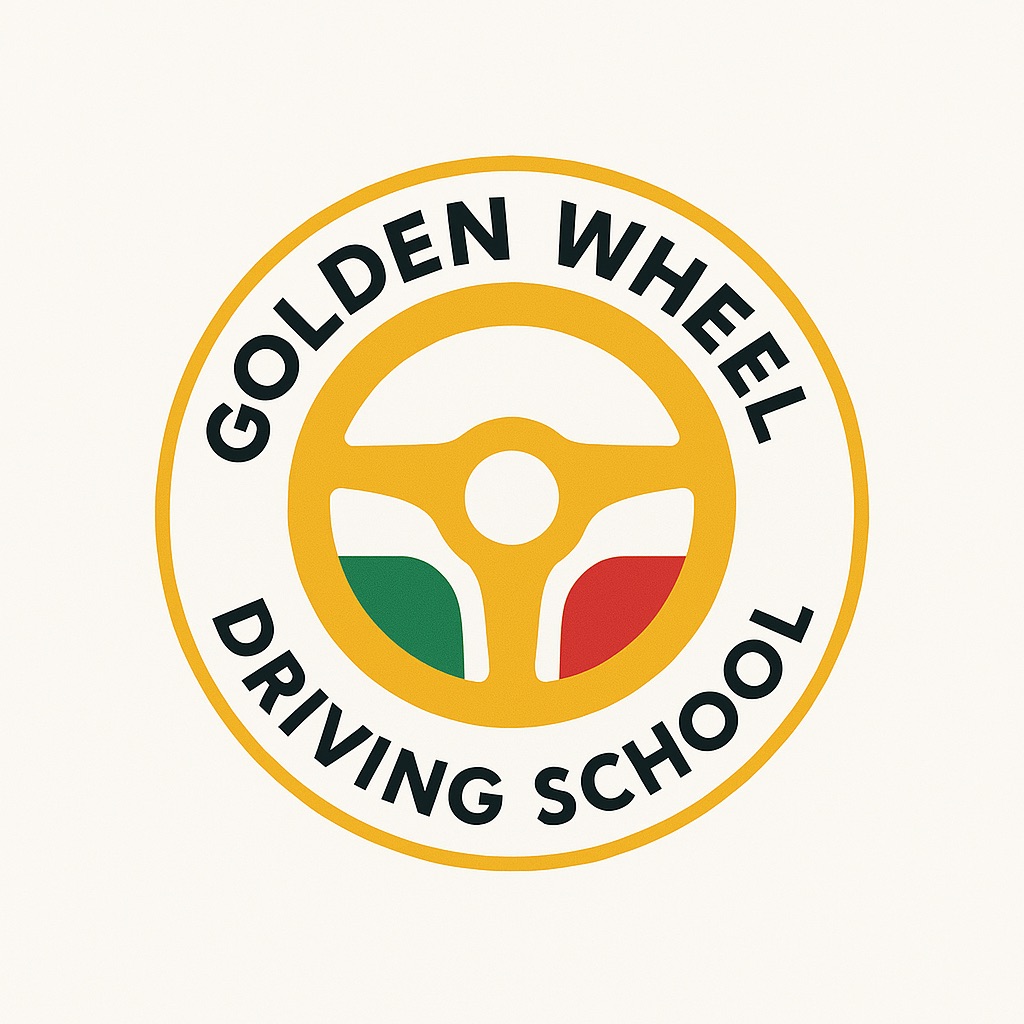Parent guide teen driving NJ
As a parent in New Jersey, preparing your teenager for the responsibilities of driving can be a daunting task. The state’s Graduated Driver License (GDL) program is designed to ensure that young drivers gain the necessary experience and skills to drive safely.

This comprehensive guide will walk you through the process, covering everything from understanding the GDL program to practicing driving skills. By following this guide, you’ll be equipped with the knowledge and confidence to help your teenager become a safe and responsible driver on New Jersey roads.
Key Takeaways
- Understanding the Graduated Driver License (GDL) program in New Jersey
- Requirements for teen drivers in NJ
- Practicing driving skills with your teenager
- Ensuring your teen is well-prepared for the responsibilities of driving
- Tips for parents to support their teen during the learning process
The Reality of Teen Driving in New Jersey
Understanding the realities of teen driving in New Jersey is essential for parents who want to ensure their teens become safe and responsible drivers. Teen driving is a significant concern due to the high risk of accidents and fatalities.
Current Teen Driving Statistics in NJ
New Jersey has seen a concerning number of teen driving accidents. According to recent statistics, teen drivers are more likely to be involved in car crashes than any other age group. The data highlights the need for effective parental guidance and supervision.
| Year | Teen Drivers Involved in Crashes | Fatalities |
|---|---|---|
| 2018 | 12,456 | 45 |
| 2019 | 11,987 | 38 |
| 2020 | 10,543 | 32 |
Common Causes of Teen Accidents
Teen accidents are often caused by distracted driving, speeding, and lack of experience. These factors can be mitigated with proper guidance and practice.
Why Parental Guidance Matters
Parental involvement is crucial in shaping a teen’s driving habits. By setting clear expectations and providing constructive feedback, parents can significantly reduce their teen’s risk of being involved in an accident.
New Jersey’s Graduated Driver License (GDL) Program Explained
The GDL program in New Jersey is structured to gradually introduce teen drivers to the complexities of driving through several licensing stages. This multi-phase approach is designed to ensure that new drivers gain sufficient experience and skills before obtaining full driving privileges.
Early Bird Permit (16 years old)
The journey begins with the Early Bird Permit, available to teens at the age of 16. This permit allows supervised driving, providing an opportunity for teens to gain initial driving experience under the guidance of a licensed driver.
Examination Permit (17 years old)
Upon turning 17, teens can apply for the Examination Permit, which requires passing a written test on road signs, signals, and driving laws. This stage is critical for assessing a teen’s understanding of driving rules and regulations.
Probationary License Requirements
After holding the Examination Permit for a specified period and completing the required supervised driving hours, teens can apply for a Probationary License. This license comes with certain restrictions and curfews, aimed at minimizing risk during the initial driving period.
Restrictions and Curfews
Teens with a Probationary License face specific restrictions, including limitations on driving hours and the number of passengers allowed in the vehicle. For example, driving is typically restricted between midnight and 5 a.m., unless accompanied by a licensed driver over 21 years old. Understanding and adhering to these rules is crucial for teen drivers.
By navigating through the GDL program’s stages, teen drivers in New Jersey can develop the necessary skills and maturity to become safe and responsible drivers. Parents play a vital role in this process, providing guidance and supervision throughout each stage.
Navigating the NJ MVC: Documentation and Testing
To successfully obtain a driver’s license, teens and their parents must be well-versed in the NJ MVC’s documentation and testing procedures. The process can be complex, but being prepared makes it more manageable.
Required Forms and Identification
The first step in the NJ MVC process is gathering the necessary forms and identification. Teens will need to provide proof of age, identity, and residency. This typically includes a birth certificate, social security card, and utility bills or bank statements.
The 6 Point ID Verification System
New Jersey uses a 6 Point ID Verification System to ensure the authenticity of identification documents. Teens and their parents should understand how this system works to avoid any issues during the application process.
“The 6 Point ID Verification System is a critical component of the NJ MVC’s efforts to prevent identity theft and ensure the integrity of the licensing process.”
Written Test Preparation
Preparing for the written test is a crucial step in obtaining a driver’s license. Teens should study the New Jersey Driver Manual, which covers road signs, traffic laws, and safe driving practices. There are also online resources and practice tests available to help teens feel more confident.
Road Test Requirements
The road test assesses a teen’s ability to safely operate a vehicle. To prepare, teens should practice driving under various conditions and be familiar with the vehicle’s operation. Parental guidance during this phase is invaluable, as it helps teens become more comfortable and competent drivers.
By understanding the NJ MVC’s requirements and being prepared, teens can navigate the licensing process more smoothly. Effective parental monitoring and support during this period are crucial for teen driving education programs.
Comprehensive Parent Guide for Teen Driving in NJ
Preparing your teen for the responsibilities of driving in New Jersey requires a comprehensive approach that goes beyond the basics of driving skills. As a parent, your involvement is crucial in shaping your teen’s driving habits and ensuring they become a safe, responsible driver.
Creating a Structured Learning Plan
A structured learning plan is essential for your teen’s driving education. This plan should include a mix of professional driving lessons, practice driving under various conditions, and discussions about driving safety and rules. Start by setting clear goals and milestones, such as mastering basic vehicle control, navigating different types of roads, and handling various weather conditions.
Developing a Parent-Teen Driving Contract
A parent-teen driving contract is a valuable tool that outlines the rules and expectations for your teen’s driving privileges. This contract should cover aspects such as curfews, passenger limits, and the consequences of violating the agreed-upon rules. By having a clear, mutual understanding, you can help your teen understand the responsibilities that come with driving.
Setting Progressive Privileges and Responsibilities
As your teen progresses in their driving education, it’s essential to gradually increase their privileges while also emphasizing their responsibilities. This could include extending their curfew, allowing them to drive in new areas, or giving them more independence in their driving schedule. However, these privileges should be tied to their demonstration of safe driving practices.
Modeling Good Driving Behavior
One of the most effective ways to teach your teen good driving habits is by modeling them yourself. Demonstrate safe driving practices, such as obeying speed limits, avoiding distractions while driving, and being courteous to other drivers. By being a positive role model, you can significantly influence your teen’s driving behavior and attitude.
Effective Practice Sessions: Building Skills Systematically
## Effective Practice Sessions: Building Skills Systematically
### Starting in Empty Parking Lots
Practicing driving with your teen is an essential part of their learning process. Begin by having them practice in empty parking lots. This setting allows them to get comfortable with the vehicle’s controls and basic driving skills without the pressure of other traffic.
### Progressing to Residential Streets
Once they have become familiar with the basics, it’s time to progress to residential streets. This environment introduces them to real-world driving scenarios, such as navigating through intersections, obeying traffic signals, and managing speed.
### Tackling New Jersey Highways
As their skills improve, gradually introduce more challenging driving environments, such as highways. This will help them develop the ability to handle higher speeds, merge with traffic, and navigate through complex interchanges.
### Practicing in Various Weather Conditions
To further enhance their driving skills, ensure they practice in various weather conditions. This includes driving in rain, snow, or other adverse weather conditions that New Jersey may experience. By doing so, they will learn to adapt their driving to different conditions, making them more versatile and prepared drivers.
By following this structured practice plan, you can help your teen become a confident and capable driver, equipped to handle a variety of driving scenarios that they may encounter on the roads of New Jersey.
Addressing High-Risk Driving Behaviors
The journey to becoming a safe driver involves not just mastering driving skills, but also avoiding high-risk behaviors like distracted driving. As a parent, it’s crucial to have open and honest conversations with your teen about the dangers associated with these behaviors.
Distracted Driving Prevention Strategies
Distracted driving is a leading cause of accidents among teen drivers. To prevent this, encourage your teen to put their phone on silent mode while driving and use a phone mount if they need to use GPS. Emphasize the importance of keeping their eyes on the road and avoiding eating or grooming while driving.
According to the National Highway Traffic Safety Administration (NHTSA), distracted driving claimed over 3,100 lives in 2020 alone. This statistic highlights the need for effective prevention strategies.
“Distracted driving is a serious issue that requires a multifaceted approach to prevent. Parents play a critical role in shaping their teen’s driving habits.”
Managing Peer Influence and Passengers
Peer influence can significantly impact a teen’s driving behavior. Discuss with your teen the risks of having multiple passengers in the car and establish rules for passenger limits. Encourage them to speak up if they feel unsafe due to the driver’s behavior.
| Passenger Limit Rules | Benefits |
|---|---|
| Limiting passengers to one or two | Reduces distractions and peer pressure |
| No passengers allowed during the initial driving phase | Minimizes risk of accidents due to peer influence |
Preventing Speeding and Aggressive Driving
Speeding and aggressive driving are other high-risk behaviors that can lead to severe consequences. Encourage your teen to follow speed limits and maintain a safe distance from other vehicles. Model good driving behavior yourself, as teens often mimic their parents’ driving habits.
Substance Use Conversations
It’s essential to have candid conversations with your teen about the dangers of driving under the influence of alcohol or drugs. Emphasize that substance use impairs judgment and reaction time, significantly increasing the risk of accidents.
By addressing these high-risk driving behaviors and having open conversations with your teen, you can help them develop safe driving habits that will last a lifetime.
Technology and Tools for Monitoring Teen Drivers
With the advancement in technology, parents now have various tools to monitor their teen’s driving. This not only helps in ensuring their safety but also aids in teaching responsible driving habits.
GPS Tracking and Monitoring Apps
GPS tracking and monitoring apps are powerful tools that allow parents to keep tabs on their teen’s driving habits. These apps can track location, speed, and even provide alerts for harsh braking or acceleration. Some popular options include Life360 and Verizon’s Network Fleet.

Dashboard Cameras and Their Benefits
Dashboard cameras, or dash cams, provide visual evidence of driving incidents. They can help resolve disputes and provide valuable feedback on driving behavior. Many models offer features like night vision and GPS integration.
Vehicle Safety Features for New Drivers
Modern vehicles come equipped with various safety features that can be particularly beneficial for new drivers. Features like lane departure warning, blind-spot monitoring, and automatic emergency braking can significantly enhance safety on the road.
Setting Technology Boundaries
While technology can be a valuable aid, it’s crucial to set boundaries around its use. Parents should discuss with their teens how to use these tools responsibly and ensure they understand that technology is a supplement to, not a replacement for, safe driving practices.
By leveraging these technologies and setting clear guidelines, parents can play an active role in their teen’s driving education, enhancing both safety and responsibility.
Mastering New Jersey’s Unique Driving Challenges
Here is the content for section 9:
## Mastering New Jersey’s Unique Driving Challenges
New Jersey has its unique driving challenges that require special attention and preparation. Teen drivers, in particular, need to be aware of these challenges to ensure their safety on the road.
### Navigating Jughandles and Traffic Circles
One of the distinctive features of New Jersey’s road network is the presence of jughandles and traffic circles. Jughandles are a type of intersection where traffic flows in a continuous loop, and drivers need to navigate through them carefully. Traffic circles, on the other hand, are circular intersections where traffic flows around a central island. Both jughandles and traffic circles require careful navigation to avoid accidents and ensure smooth traffic flow.
### Driving in Dense Urban Areas
Driving in dense urban areas can be challenging due to the high volume of traffic, narrow streets, and complex intersections. Teen drivers need to be extra cautious when navigating through crowded city streets, as the risk of accidents is higher in such areas.
### Shore Traffic and Seasonal Challenges
New Jersey’s shoreline areas experience a significant influx of tourists during peak season, leading to congested roads and increased traffic. Teen drivers should be prepared to handle the challenges posed by shore traffic, including parking difficulties and increased risk of accidents.
### Toll Roads and EZ-Pass Management
New Jersey has an extensive network of toll roads, and drivers need to be aware of the toll collection systems, including EZ-Pass. Teen drivers should understand how to use EZ-Pass effectively to avoid congestion at toll plazas and ensure smooth passage through toll roads.
By mastering these unique driving challenges, teen drivers in New Jersey can develop the skills and awareness necessary to navigate the state’s roads safely and confidently. Effective preparation and practice will help them become more competent and responsible drivers.
Insurance and Financial Considerations
As your teenager begins driving, understanding the auto insurance requirements in New Jersey is crucial. The state mandates that all drivers have a valid auto insurance policy that meets the minimum coverage requirements.
Many insurance companies offer discounts to students who maintain good grades or complete a driver’s education course. By taking advantage of these discounts, you can reduce your insurance premiums.
| Category | Description |
|---|---|
| Liability Coverage | Includes liability coverage for bodily injury or death and property damage. |
| Good Student Discounts | Discounts for students with good grades or those who complete a driver’s education course. |
| Vehicle Maintenance | Regular checks on tire pressure, oil levels, and overall vehicle condition. |
| Driving Expense Budget | Costs such as insurance premiums, fuel, maintenance, and other driving-related expenses. |
New Jersey Resources for Teen Driver Education
Preparing your teen for driving in New Jersey involves leveraging the state’s comprehensive driver education resources. New Jersey is committed to ensuring that teen drivers are well-prepared for the responsibilities of driving through a variety of programs and initiatives.
State-Approved Driving Schools
New Jersey boasts a list of state-approved driving schools that offer high-quality instruction. These schools are equipped with experienced instructors who are dedicated to teaching both the theoretical and practical aspects of driving. “The right training can make all the difference in a teen’s driving career,” emphasizes the importance of choosing a state-approved school.
Defensive Driving Courses
Defensive driving courses are another valuable resource available to teen drivers in New Jersey. These courses teach teens how to anticipate and react to hazardous situations on the road, significantly reducing the risk of accidents. By enrolling in a defensive driving course, teens can become more aware of their surroundings and develop safe driving habits.
Share the Keys Program
The Share the Keys program is a parental involvement initiative that encourages parents to play an active role in their teen’s driving education. This program provides parents with the tools and guidance needed to help their teens become safe and responsible drivers. As stated by a parent who participated, “Being involved in my teen’s driving education made me realize how crucial it is to set clear expectations and boundaries.”
NJ Teen Safe Driving Coalitions
New Jersey also hosts Teen Safe Driving Coalitions, which are dedicated to promoting safe driving practices among teens. These coalitions work to educate teens, parents, and the broader community about the importance of safe driving and provide resources to support teen driver education.

By utilizing these resources, parents can ensure their teens receive a comprehensive driving education, setting them up for success on the road.
Conclusion: Fostering Independence with Safety in Mind
As you guide your teen through the process of learning to drive, it’s essential to balance fostering independence with ensuring safety. By following the parent guide teen driving nj outlined in this article, you can help your teen become a safe and responsible driver. Ongoing parental involvement is crucial in reinforcing teen driving safety tips and ensuring your teen adheres to the practices learned during their training.
By now, you and your teen have navigated the complexities of New Jersey’s Graduated Driver License (GDL) Program, understood the importance of comprehensive practice sessions, and explored tools for monitoring driving behavior. As your teen progresses, continue to offer guidance and support, gradually increasing their independence while maintaining a watchful eye.
Effective parent-teen communication and setting clear expectations are key to developing a responsible driver. Utilize the resources available in New Jersey, such as state-approved driving schools and defensive driving courses, to supplement your teen’s learning experience. By combining your guidance with the structured learning process, you’ll be helping your teen become a confident and safe driver, equipped with the skills necessary to navigate New Jersey’s roads.
Stay involved, stay informed, and let your teen drive towards a safe and successful driving future.







